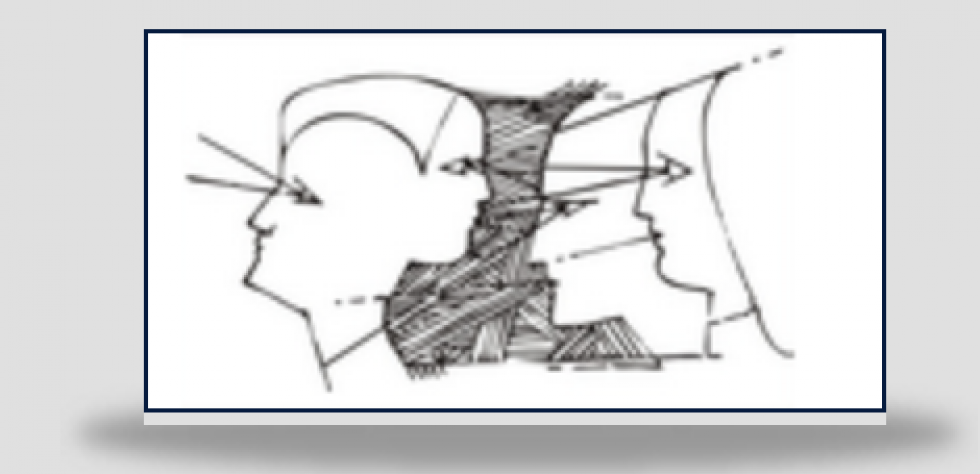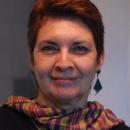Contribution to CIRET's debate curated by B. Nicolescu, Honorary President, as a response to Covid-19 "What will do with this ordeal?"
In this time of prolonged confinement, I suppose like many other people I decided to sort through documents that had accumulated for years. In the course of this unavoidable task, I came across a folder in which were preciously saved the evaluations that I had the habit of asking of my students when I was teaching Spanish.
I dived back into their reports, mainly centered on exercises I had asked them to practice in a program they called THE BODY COURSE: beginning by offering oneself a moment of silence and perceiving its effects on the body, mind and environment; stopping for a moment during interactions to give oneself time to more fully evoke and integrate lessons learned or finishing with a moment of return to oneself to allow questions or new perspectives to emerge.
Guided by avant-guard researchers such as A. de la Garanderie, B.-M. Barth and Danis Bois, my research and educational practices point toward including in the classroom and in teacher training the physical dimension with self-perception, which has been artificially distanced from other dimensions of education.2
The student reports are eloquent. Rediscovering them today at the bottom of my archives, in this particular context and moment, is certainly not a chance event. Their words, their acuity, their sensitivity comfort me as I face a need that gains still more meaning and force in this time of pandemic: to incorporate pedagogic resources that respond to the needs of young people so that they can face today’s challenges and contribute actively in the world as it re-emerges.
- “Thanks to ‘the body course’, I felt more relaxed, more present and attentive, at rest. The atmosphere is calm, so it is easier to concentrate. This is truly useful.”
- “I have the impression that the mind and body are in relation. During the sequence on ecology, I felt genuinely concerned by pollution and became aware that I must act.”
- “At different moments of the session, the exercises allowed me to relax. Compared to other times, everyone was calmer but at the same time we were able to learn a great deal.”
- “It allowed me to step back from my being and at the same time to feel closer to myself. We listen better and the group is more unified.”
- I must admit that at the beginning I wasn’t enthusiastic about the exercises, until I felt stressed yesterday before my French orals! Then I decided to do a few exercises we had learned and they were a huge help!”
Younger students were equally capable not only of experiencing their states but also of putting words on their experiences:
- “I very much appreciated the moments of stop which allowed me to pull myself together when I had to assimilate too many things.”
- “The exercises at the beginning of the course allowed me to calm down and to profit from the silence : this makes ideas clearer, the sessions are less noisy, more relaxed, and at the same time we were able to better retain the lessons.”
- “The exercises during the course allowed me to relax and to learn to relax for myself before tests.”
- I would have liked to do that in all of the courses, it allows you to be less charged up so as to better hear the course material, better understand it and make progress.”
They were able to notice that a change in their relation to their bodies can lead to new perceptions, new images and new points of reference. That a new perception of space and time, of movement, of inner connections can change their relations with themselves, with others and the world. An approach that takes into account the person in his or her body and mind allows one to learn to sense oneself, to think and to give meaning to one’s experience.
In this time of confinement, a miniscule virus is giving us a lesson that cannot be encountered in a course, in a classroom, or even through educational platforms recently put in place, but only— and this is the irony—through the reappearance of what had been set aside: this relation with the body, a relation that has become more pressing and more present.
This pandemic permits us to discover that now that our bodies are threatened, “I am obliged to take care of it and protect it” and to realise that “I need this body which I constantly use without taking into account its state.”
Beyond the inevitable consequences of sensations of enclosure and at times of anguish, “sheltering in place” can allow me to come back to myself, to return to my cocoon, to meditate, to feel the state of my body: its tensions, its tightness, its relaxation and tranquility. When my life unfolds in another rhythm, far from agitation, to perceive by contrast and discern through this Sensible Body: “the resonating chamber of all perceptual, affective, cognitive or even imaginary experience”, all the changes in the material that I am, in my emotions and thoughts. Perhaps also to glimpse the existence of an internal, intelligent system which can regulate itself, as soon as I grant it the possibility of doing its work in good conditions.
Finally, this health crisis imposes on us a forced stop that allows us to discover a certain slowness, sometimes even a certain form of paralysis that upsets our habitual dynamic. According to Bois, it is in this meeting of opposites that resides the individual’s force of resilience, in which the body and psychic life are associated and from which can emerge a new direction, new meaning.
Let us hope that what life is teaching us in these exceptional circumstances may be the paradigmatic turning point at which the logical brain yields to a pre-reflexive intelligence anchored in the Sensible Body, the temple of man that shelters what is most alive. This is basically the path proposed nearly a half-century ago by Francisco Varela in which the Spiritual is inscribed in the body, in which sensory, motor and perceptual processes and the knowledge that emerges from them are fundamentally linked to action.3
This is what I illustrated by calling attention to Leonardo’s image of “Vitruvian Man”

The process of co-birth of the body-brain subject and the object in its environment.
This new relation with oneself also permits one to enter into empathetic relations with others: empathy anchored in a shared capacity for perception, which invites the creation of bonds of reciprocity with those around one and summons ethical and political engagement.
Therefore, let us work in education to include the physical and self-perceptive dimension by offering teachers the resources to help prepare young people for unforeseen situations which we know will be more and more challenging. With the Sensible Body as a guiding factor, our young people will be ready. For my part I ardently wish to contribute in that direction by continuing to accompany young people, and adults as well, in their quest for identity and search for achievement. Today this quest is a central pillar to help them confidently confront the challenges they will encounter.
(Translated by Roger and Susan Lipsey)


